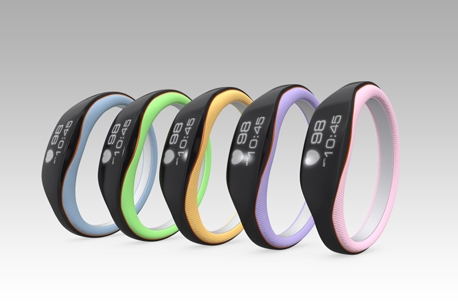FEATURE15 January 2015
All MRS websites use cookies to help us improve our services. Any data collected is anonymised. If you continue using this site without accepting cookies you may experience some performance issues. Read about our cookies here.
FEATURE15 January 2015
Digital market research agency, Clicked, conducted research to provide UK-relevant insights in a wearables market that is awash with data from the US. A range of research methods were used to examine attitudes and market potential by business sector, shedding light on some surprising results. By Steve Mellor and Neil Russell, Clicked Research Agency.

As smartphones become old news, people need a technology fix and wearable tech is maturing at the right time. Covering everything from fitness wristbands, sports watches, smart watches and smart glasses, all wearables incorporate computer or advanced electronic technologies called MEMS (micro-electro-mechanical systems).
At Clicked we’ve run research to capture what the UK appetite is for wearables and their benefits.
We found prompted awareness at 75%; 7% own a wearable device and 20% are extremely interested in owning one – a great opportunity for growth. It’s still a new category – two thirds have owned their wearable for less than six months, so it’s still early to gauge mass market potential.
Sometimes it’s hard to quantify the business potential of a new category, when consumers don’t really know what they might be ‘missing out on’. So, to set the scene, we walked 1,000 potential consumers through an example user’s daily routine. The scenarios highlighted benefits of wearable technology appropriate to the user’s situation… at home, at work, on the move and socially. We noticed extreme interest grew markedly once consumers understood the potential in context and applied it to their own lives.
Separately we presented 31 benefits for consumers to score. The benefits were in four categories: Health and Exercise, Entertainment and Gaming, Communications and Information, and Retail.
We found that retail benefits such as in-store navigation and price comparisons, both most effectively delivered by smart glasses, scored highly. We also saw how sharing exercise levels with friends to compare and compete was highly motivating to some. To others, discreet vibrations on the smartwatch to notify users of calls, emails or SMS was appealing.
Qualitatively we found polarised responses to the benefits, depending on their attitudes to health, competitiveness, gender, life stage, sociability and technical literacy. We generated a segmentation of the quantitative data to explore this further.
The largest segment – the ‘Older Keen Exercisers’ accounting for 24% – are, in fact, the hardest to attract. While they may be technologically literate, they are uncomfortable about information security. The irony is that this segment would benefit the most from the health information wearables can offer, but there is a prerequisite of sharing data that the older generation does not currently feel comfortable about.
The most enthusiastic segment for wearables – the ‘Social Reliants’ – accounts for 11% of the population. These are young, tech-savvy communicators. They really want a smart watch (and will probably buy the Apple Watch) but besides the communication benefits they also demand retail, entertainment and navigation functionality above the health and exercise benefits.
Negatively, we found that consideration of wearables throws up many concerns. One in four feel that it would make them too dependent on technology and we can personally relate to that. As part of this research Steve used a Fitbit (a smart wristband) for four weeks and blogged his experience – over time he began to fixate on calories in vs. calories out and felt guilty if he was not active enough.
And which device is the most appealing? Smart watches show the most potential, with a market potential of six million users. However, we found that five of the top 10 benefits to those extremely interested in owning wearables are most effectively delivered by smart glasses. For those who already wear glasses, the option to add this feature to their ‘prescription’ in the future may prove very exciting.
0 Comments